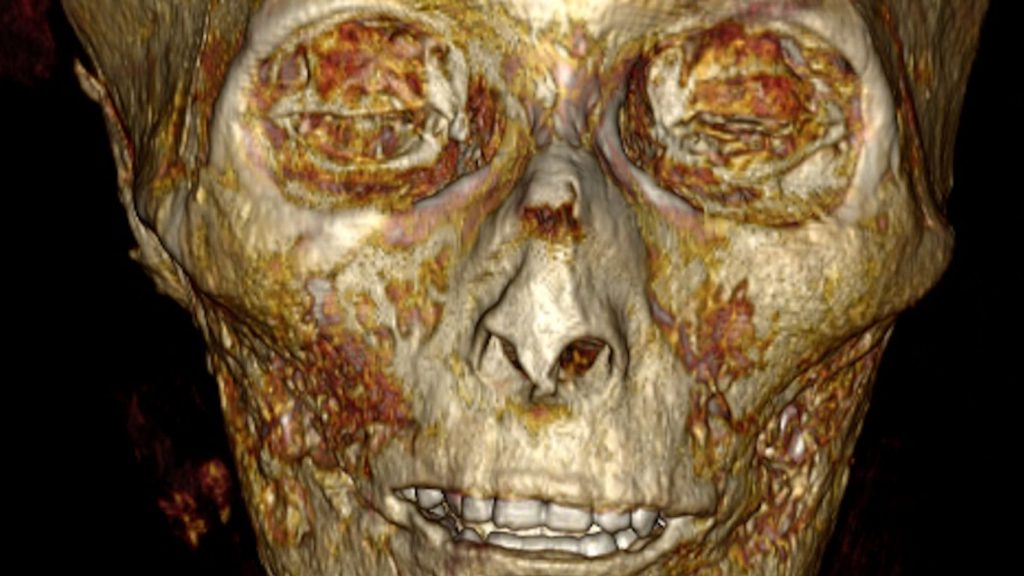The mummy of Egyptian Pharaoh Amenhotep I has been examined in “unprecedented detail” for the first time with the use of modern scanning technology.
Egyptologists have found out what exactly the hieroglyphics mean. According to the scientists, the mummy had been unwrapped once in the 11th century BC – more than four centuries after his original mummification and burial.
Researchers were able to “peel off” the facemask and bandages and discover details about his appearance and the lavish jewellery he was buried with, SkyNews reports.
The study was carried out with the use of three-dimensional computer topography scanning technology. However, the experts believed the priests who restored and reburied him did so to repair damage done by grave robbers and to reuse royal burial equipment for later pharaohs.

As Dr Sahar Saleem, professor of radiology at the Faculty of Medicine at Cairo University, said that Amenhotep I’s mummy had never been unwrapped in modern times gave us a unique opportunity. “By digitally unwrapping of the mummy and ‘peeling off’ its virtual layers – the facemask, the bandages, and the mummy itself – we could study this well-preserved pharaoh in unprecedented detail,” she added.
Amenhotep, whose name means “Amun is satisfied” – in reference to Amun, the ancient Egyptian god of the air – ruled from approximately 1525 to 1504 BC and was first discovered in 1881 at an archaeological site in Deir Al Bahari in southern Egypt.
Amenhotep I oversaw what has been described as a golden age in the civilisation’s history and, along with his mother Ahmose-Nefertari, was worshipped as a god after his death.
He was the second pharaoh of Egypt’s 18th dynasty after his father Ahmose I, who had expelled the invading Hyksos.
Dr Saleem explained that the scientists couldn’t find any wounds or disfigurement due to disease to justify the cause of death, except numerous mutilations post mortem, presumably by grave robbers after his first burial.
“His entrails had been removed by the first mummifiers, but not his brain or heart,” she says.
